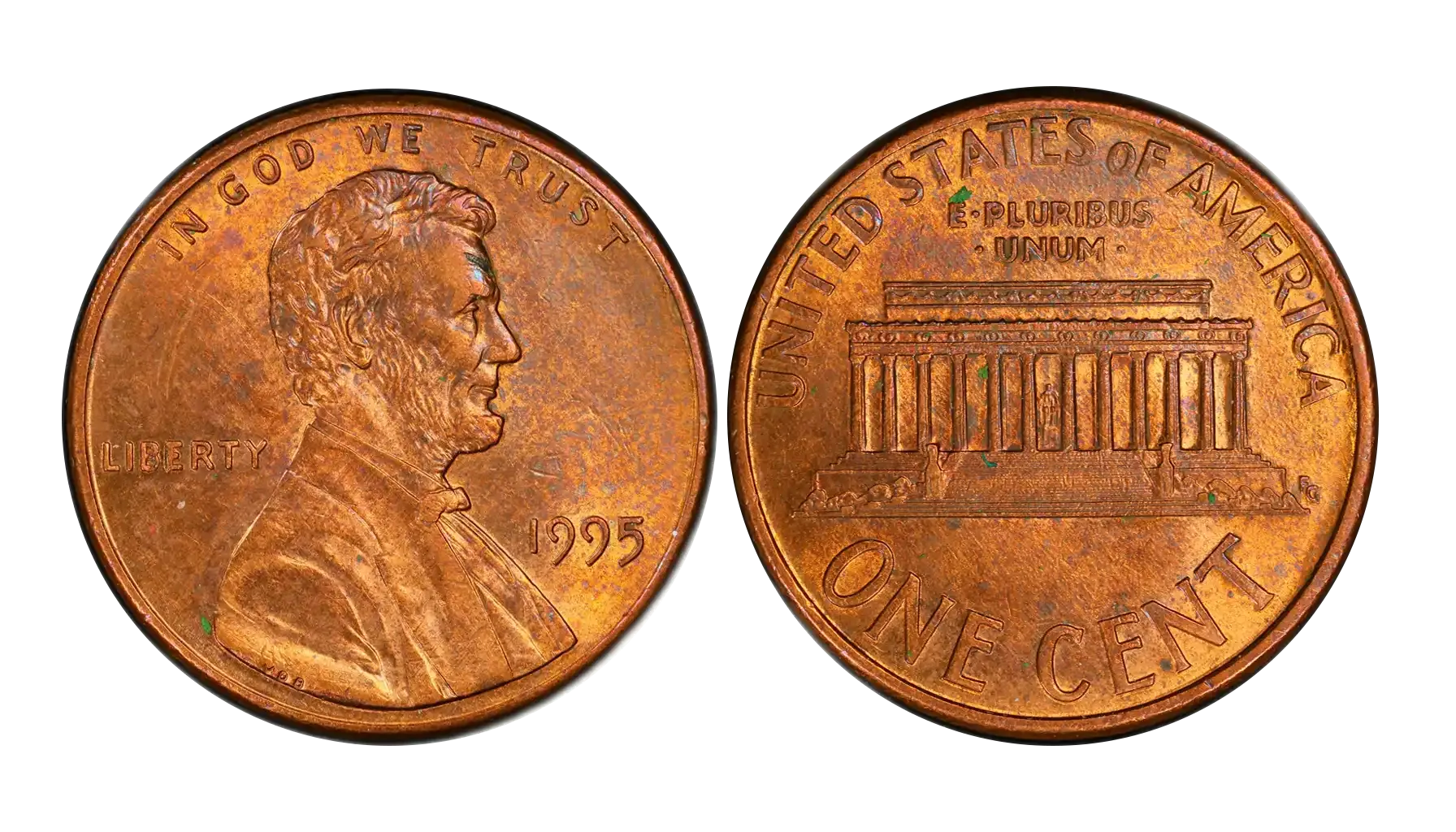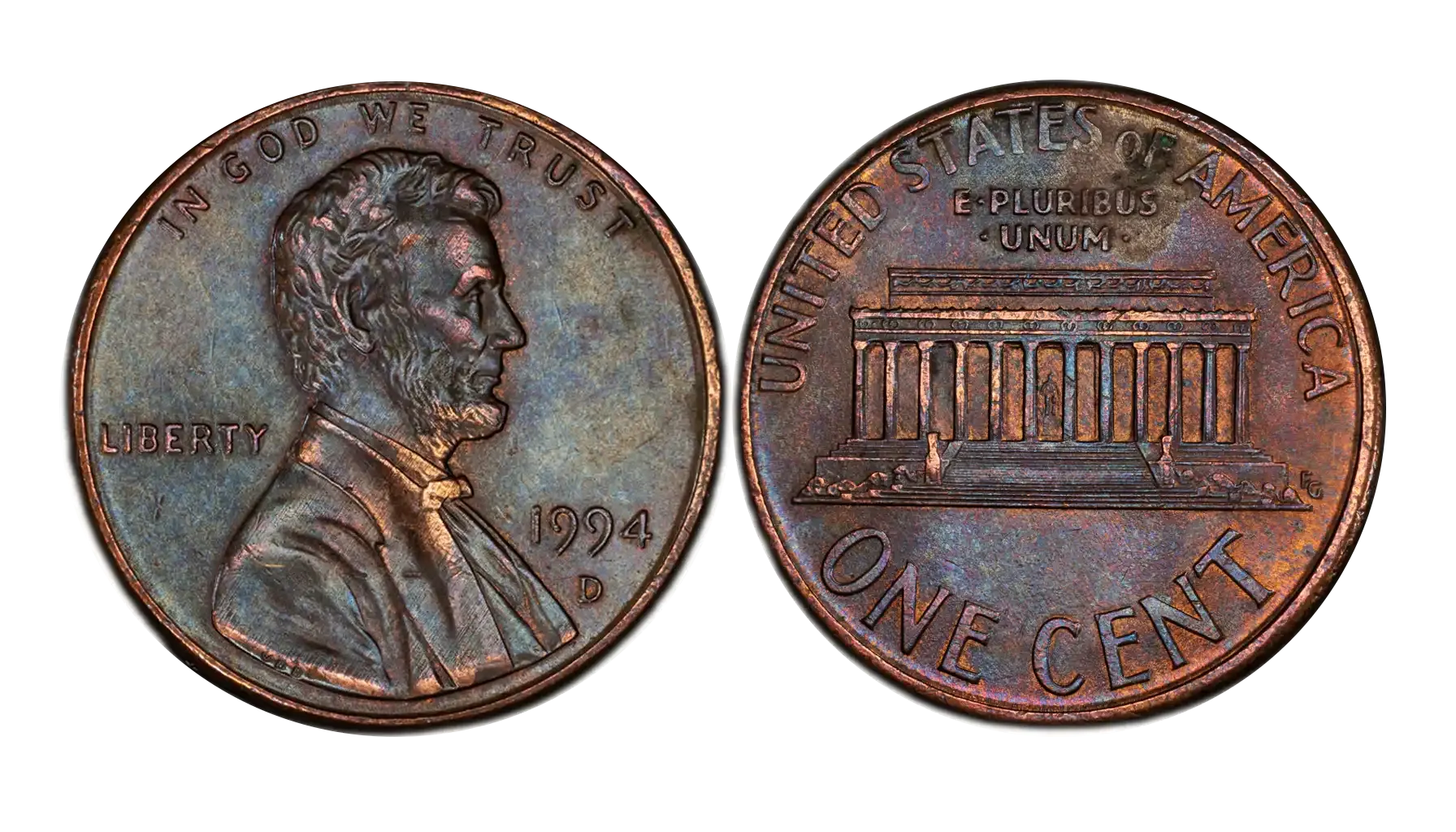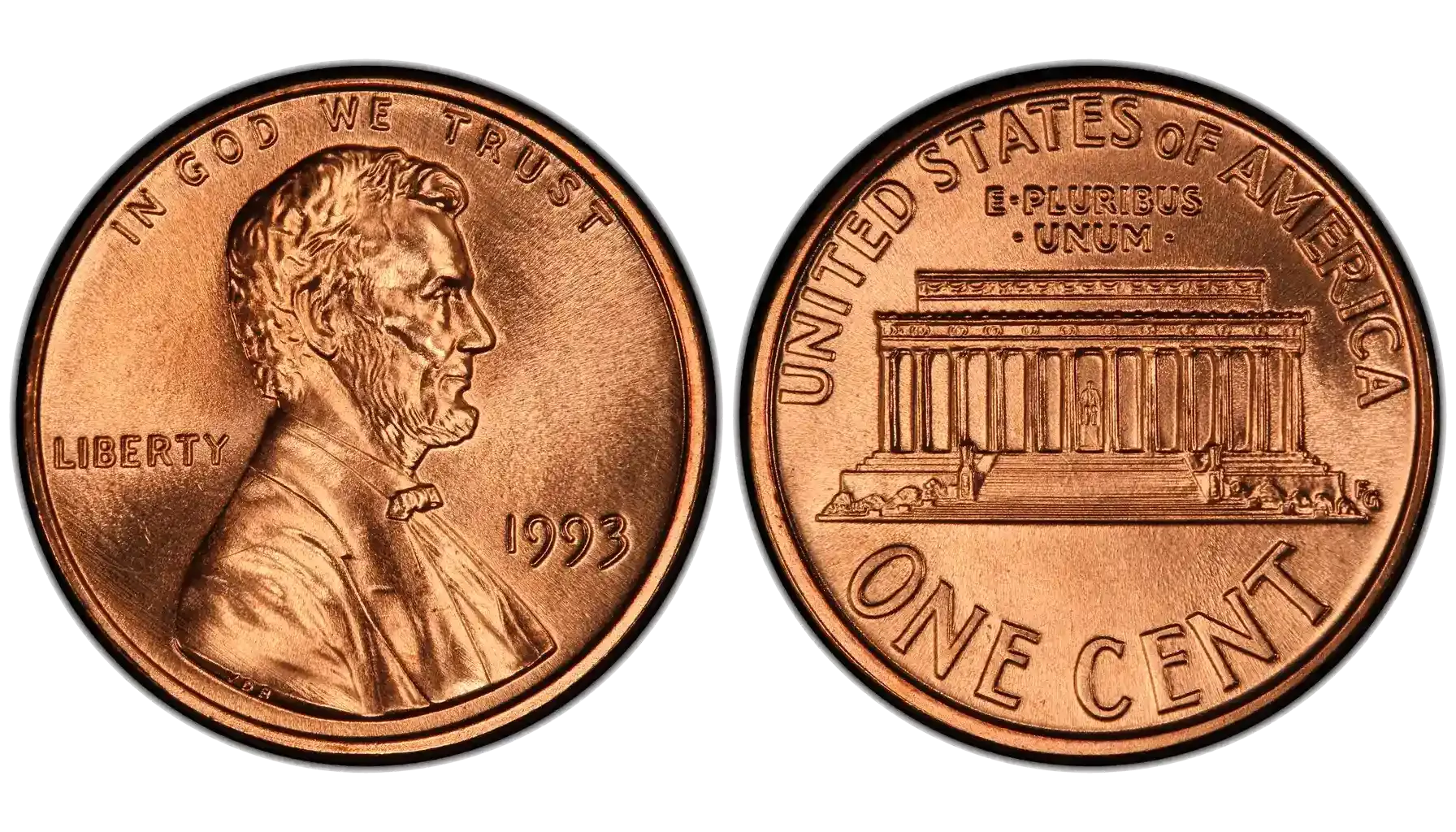Contents:
- Introduction to the 1971 Eisenhower Silver Dollar
- 1971 Eisenhower Silver Dollar Value Chart by Condition
- Identifying Rare 1971 Eisenhower Dollar Varieties
- 40% Silver Content – How to Tell If Yours Is Valuable
- Understanding Mint Marks and Where to Find Them
- The 1971-D and 1971-S Eisenhower Dollars
- Error Coins from 1971 – What to Look For
- 1971 Kennedy Half Dollar and Silver Confusion
- Final Thoughts: Should You Collect the 1971 Eisenhower Dollar?
The 1971 Eisenhower Silver Dollar debuted to honor President Dwight D. Eisenhower and the Apollo 11 moon landing. The U.S. Mint struck these coins in 40% silver for special proof sets and silver-clad collector issues. Each example features Eisenhower’s portrait on the obverse and an eagle landing on the moon on the reverse. Collectors prize these early strikes for their historical significance and striking design.
This guide walks you through identifying rare mint marks, key varieties, and proof finishes. You will learn how to spot the “S” mint mark on the San Francisco struck proofs and distinguish them from standard silver-clad issues. We also cover grading basics and market trends to help you gauge prices. Use this information to find the best way to check collector coins for value.
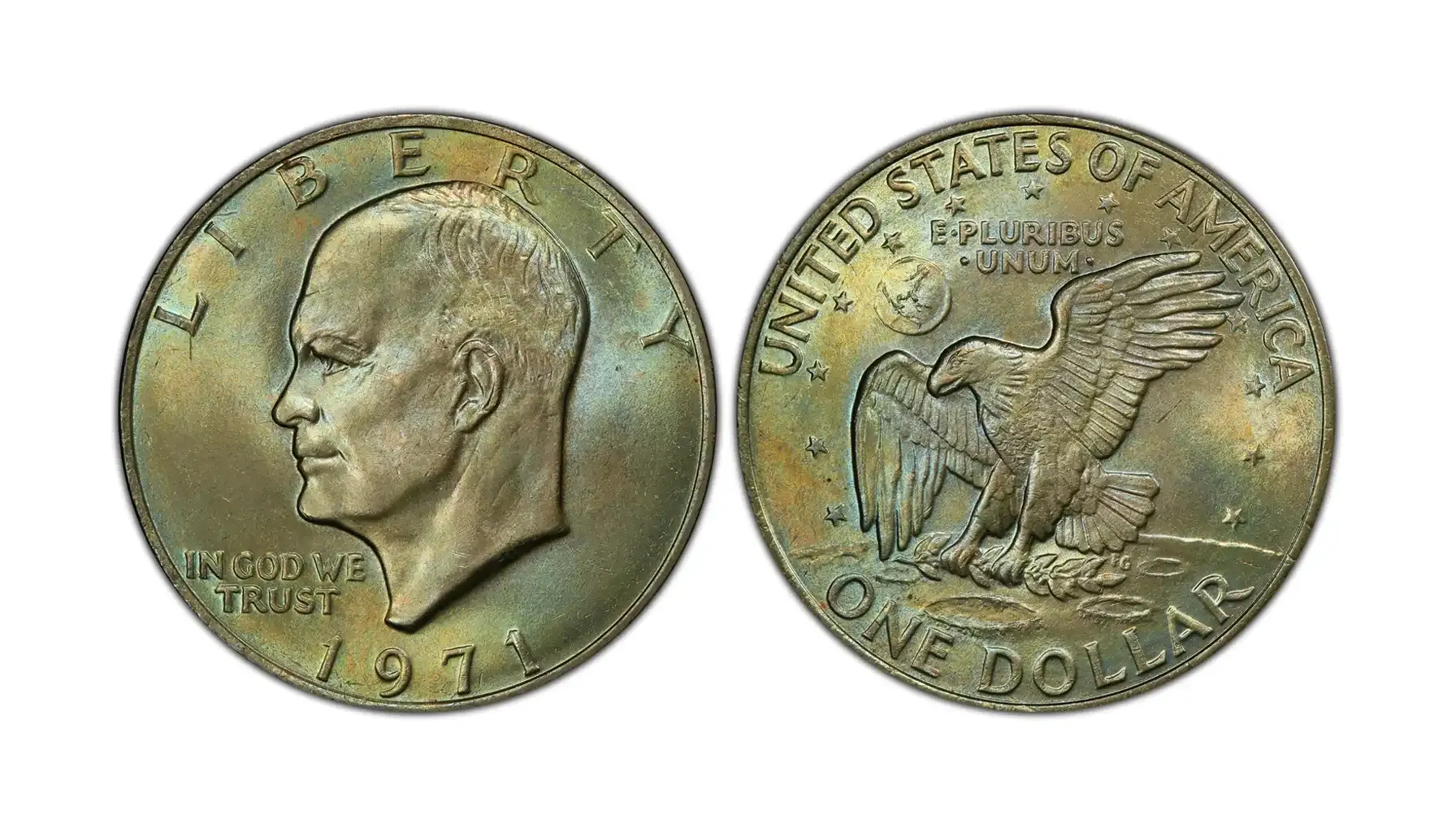
Introduction to the 1971 Eisenhower Silver Dollar
1971 marked the debut of the 1971 Eisenhower silver dollar as the first coin in the Eisenhower series. The U.S. Mint introduced this large silver dollar to honor President Dwight D. Eisenhower. Collectors and coin enthusiasts welcomed its bold design and commemorative appeal.
Mint officials balanced collector demand by issuing both standard circulation strikes and special silver versions. The 1971 Eisenhower dollar silver content consisted of 40% silver in the proof and uncirculated sets. The circulating pieces used a copper-nickel clad composition to ease production costs. This dual approach satisfied both everyday transactions and numismatic interests.
Investors quickly tracked the silver dollar 1971 value as spot prices fluctuated. Many asked, is a 1971 silver dollar worth anything beyond face value? Early releases sold out in proof sets, pushing secondary-market prices higher. Even today, well-preserved examples often trade above their original mint cost.
Key features introduced in the Eisenhower series
Obverse: Portrait of President Dwight D. Eisenhower with bold lettering
Reverse: Design honoring Apollo 11’s moon landing with an eagle landing motif
Diameter: Large 38.1 mm size distinguishing it from other circulating coins
Composition: Copper-nickel clad for circulation; 40% silver in collector editions
Edge: Reeded edge consistent with other U.S. silver dollars
1971 Eisenhower Silver Dollar Value Chart by Condition
The value of 1971 silver dollar shifts based on its grade and finish. Low-grade pieces (G to VF) trade for just a few dollars in today’s market. Meanwhile, collectors watch the 1971 silver dollar value today closely as silver prices and demand drive prices up. This chart helps outline typical price ranges by grade tier.
Next, the how much is a 1971 silver dollar worth question varies when you compare circulated and uncirculated examples. Circulated coins in grades from G (Good) through EF (Extremely Fine) often sell between $2 and $8. Uncirculated specimens graded MS60–MS64 generally command $15–$25. The market rewards eye appeal and strike quality when people assess a coin’s value.
Finally, the 1971 silver dollar worth peaks at high mint-state grades and in special finishes. Coins graded MS65–MS66 commonly fetch $25–$40. Top-end pieces graded MS67+ might reach $100–$200 or more. Proof strikes and Special Mint Set (SMS) issues also carry premiums, trading around $10–$25 depending on condition.
Grade Category | Price Range (USD) |
G (Good) | $2 – $3 |
VG (Very Good) | $3 – $4 |
F (Fine) | $4 – $5 |
VF (Very Fine) | $5 – $6 |
EF (Extremely Fine) | $6 – $8 |
AU (About Uncirculated) | $8 – $10 |
MS60 – MS62 (Mint State) | $15 – $18 |
MS63 – MS64 | $18 – $25 |
MS65 – MS66 | $25 – $40 |
MS67+ | $100 – $200+ |
Proof | $10 – $20 |
SMS (Special Mint Set) | $15 – $25 |
Identifying Rare 1971 Eisenhower Dollar Varieties
Examining these anomalies answers the question what makes a 1971 silver dollar rare and turns a common coin into a sought-after variety. By studying mintage records and error reports, enthusiasts can spot these traits and appreciate the technical factors behind each striking quirk.
Collectors chase these error pieces precisely because of their valuable 1971 silver dollar value and the premiums they command. Certain Ike dollars featuring notable doubling or misplaced mint marks fetch prices far above standard mint-state examples. When scarcity and demand collide, collectors ask why is a 1971 eisenhower silver dollar worth so much, especially for pieces with eye-catching errors.
Those interested in hunting down certified error types can refer directly to the PCGS database for more details: 1971 Eisenhower Dollar Value.
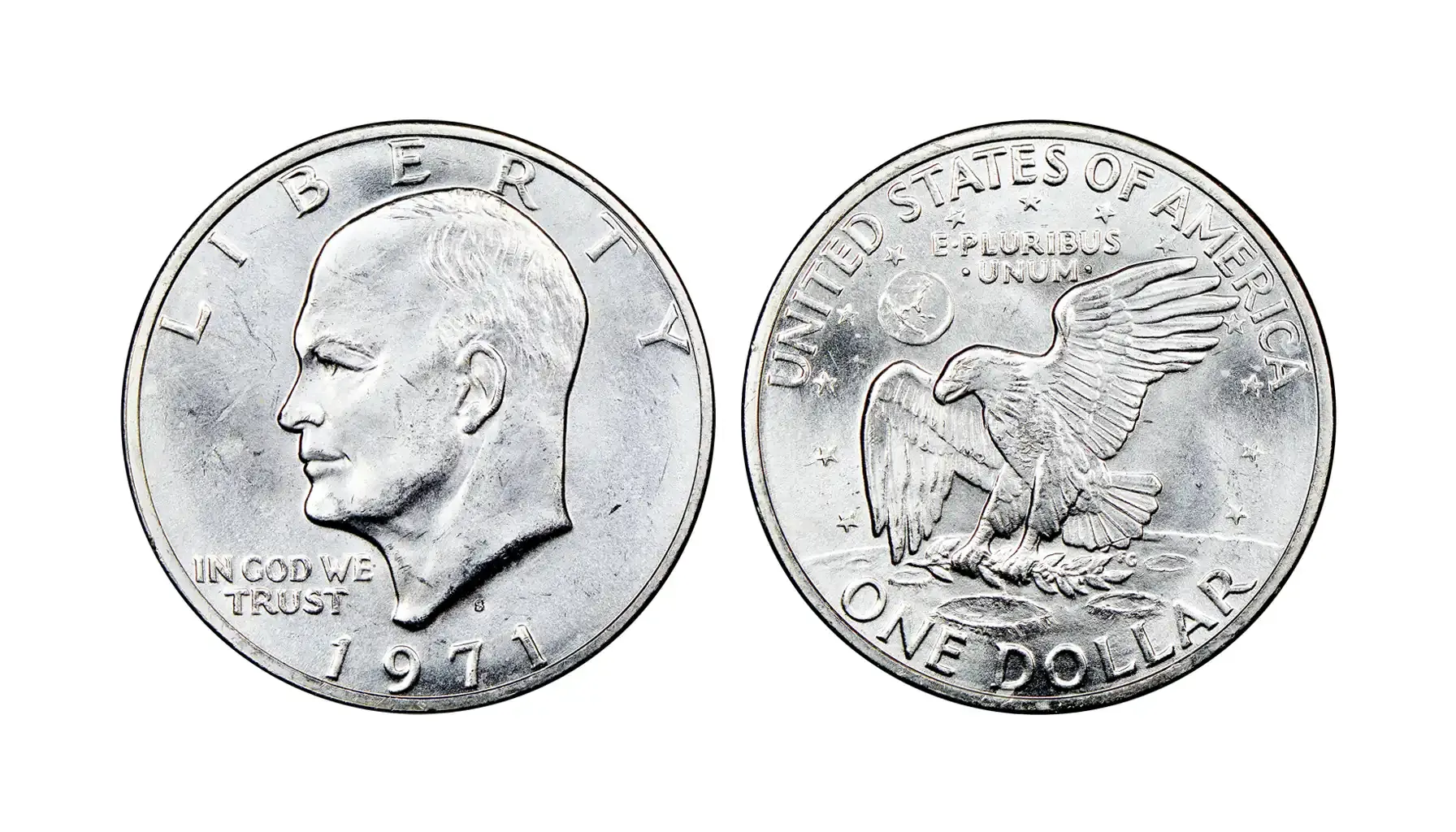
40% Silver Content – How to Tell If Yours Is Valuable
The 1971 eisenhower dollar silver content sets the silver issues apart from standard clad coins. The silver pieces carry 40% silver, while circulation strikes use a copper-nickel core. Silver dollars shine brighter and feel heavier in hand. This contrast helps collectors spot valuable coins at a glance.
To identify a 1971-s eisenhower uncirculated silver dollar, look for the “S” mint mark and a frosted finish in the Special Mint Set or proof packaging. Those coins often display a mirror-like field and crisp details. The eisenhower uncirculated silver dollar 1971 value rises when strike quality stays pristine. Grading services also certify the 1971 eisenhower uncirculated silver dollar proof for accuracy and condition.
Understanding Mint Marks and Where to Find Them
The 1971 silver dollar mint mark location appears on the reverse side, just above the eagle’s tail feathers. Coins struck at the San Francisco Mint carry an “S,” while those from Denver bear a “D.” Philadelphia-issued dollars lack any mint mark, making them easy to spot by absence. Collectors often check the 1971 d silver dollar value because Denver strikes tend to have lower mintages compared to Philadelphia, which can affect demand and pricing.
Collectors also compare the 1971 silver dollar value no mint mark with those of marked issues. Philadelphia dollars generally trade at modest premiums since they were produced in higher numbers. Meanwhile, buyers reference eisenhower silver dollar value 1971 tables to decide whether to pursue higher-grade examples or seek out lower-mintage varieties. Understanding these distinctions helps collectors prioritize which coins to add to their sets.
Mint mark guide: San Francisco vs. Denver vs. Philadelphia
San Francisco (S): Mint mark “S” on the reverse. Produces proof and Special Mint Set silver issues.
Denver (D): Mint mark “D” on the reverse. Known for low-mintage circulating strikes.
Philadelphia (no mint mark): No letter on the reverse. Highest mintage, commonly found in circulation.

The 1971-D and 1971-S Eisenhower Dollars
The 1971 d silver dollar value reflects its relatively low mintage of Denver-struck coins and strong collector interest. In 1971, the Denver Mint produced approximately 9.7 million circulation strikes, all bearing the “D” mint mark. These 1971 silver dollar d examples often trade for modest premiums in mint-state grades, hovering around $15 in typical auctions.
In contrast, the 1971-s eisenhower uncirculated silver dollar saw a lower output of roughly 4.6 million coins in Special Mint Sets, each containing 40% silver. These 1971 US dollar coin varieties command higher prices due to their metal content and collector finishes.
Mint & Type | Mintage | Average Auction Price (USD) |
1971-D Circulating | 9,699,994 | $15 |
1971-S Uncirculated Silver (SMS) | 4,619,893 | $35 |
1971-S Proof Silver | 1,076,700 | $25 |
Error Coins from 1971 – What to Look For
Wrong Planchet Error
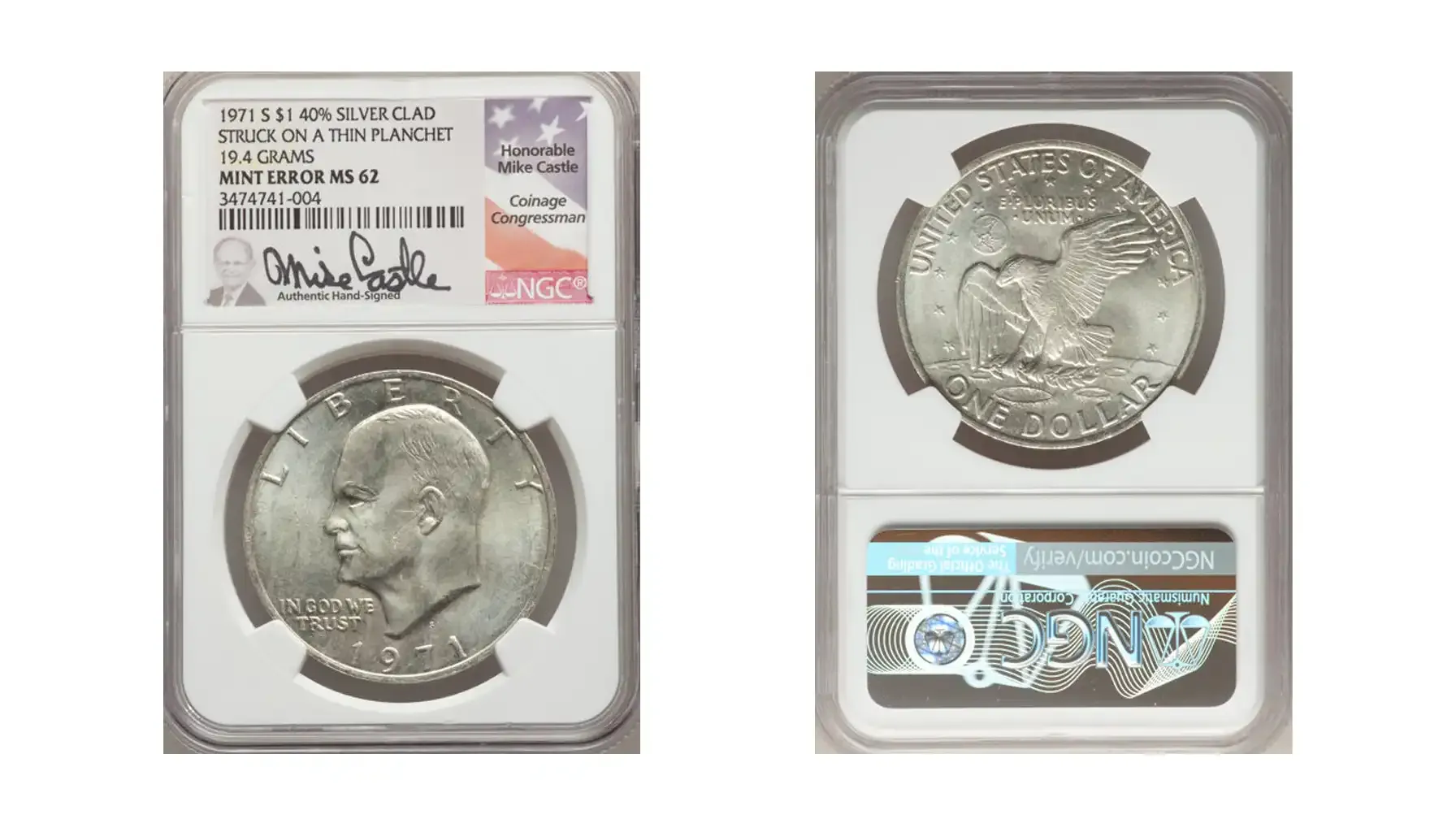
Among the Top 5 confirmed errors for the 1971 issue, the wrong planchet error stands out as highly collectible. In these cases, the Mint accidentally struck an Eisenhower design on a nonstandard metal blank. Collectors prize these mistakes because they reveal unexpected metal types or core layers. Finding one in the wild can yield significant premiums at auction.
Examine the edge for mismatched metal layers or unusual core color.
Compare weight to a standard silver dollar; wrong planchets often weigh significantly less or more.
Check surface texture; a wrong planchet may show pitting, roughness, or remnants of another design.
Look for residual imprints from the original planchet’s intended series (e.g., clad cent or nickel).
Wrong Planchet Error – the 1977 Quarter value guide shows how these off-metal strikes earn premium bids from collectors.
Strike-Through Errors

Collectors often ask what is a 1971 silver dollar worth when they encounter a strike-through error. These happen when debris or grease lies on the die, leaving raised bumps or voids on the coin’s surface. A clear strike-through can dramatically alter a coin’s eye appeal and rarity. Numismatists study these flaws to determine how dramatically the error reduces mintage quality.
Inspect both obverse and reverse under strong light to find raised metal blobs or indentations.
Use a loupe to spot small scratches or embedded debris caught between die and planchet.
Feel the surface gently; strike-throughs often feel rough or irregular compared to smooth fields.
Compare to a standard specimen; any raised anomaly not part of the design indicates a strike-through.
Double Die Errors
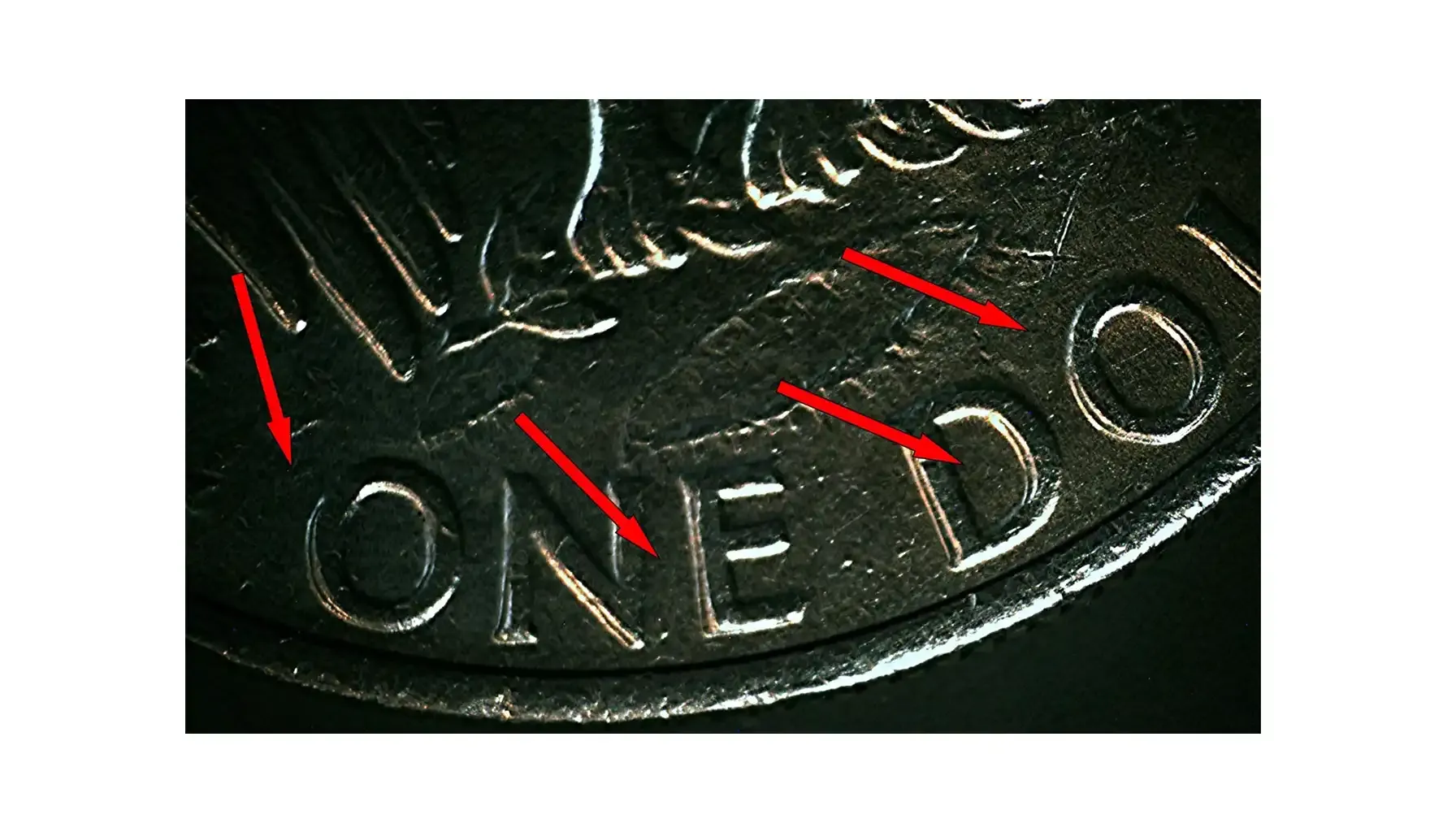
Elevated attention on the 1971 Eisenhower silver dollar value often focuses on double die errors. In these errors, a slight shift between die strikes causes design elements—letters, dates, or eagles—to appear doubled. The doubling can vary in severity, from faint secondary outlines to bold, ghosted images. Collectors prize strong doubling because it confirms a genuine mint anomaly.
Examine lettering and dates for signs of doubled edges or shadows around characters.
Check the eagle’s feathers and stars on the reverse for overlapping lines.
Use magnification to see if doubling is present on multiple design elements or limited to one area.
Compare side-by-side with a known non-error example to highlight any doubled features.
Off-Center Strike Errors
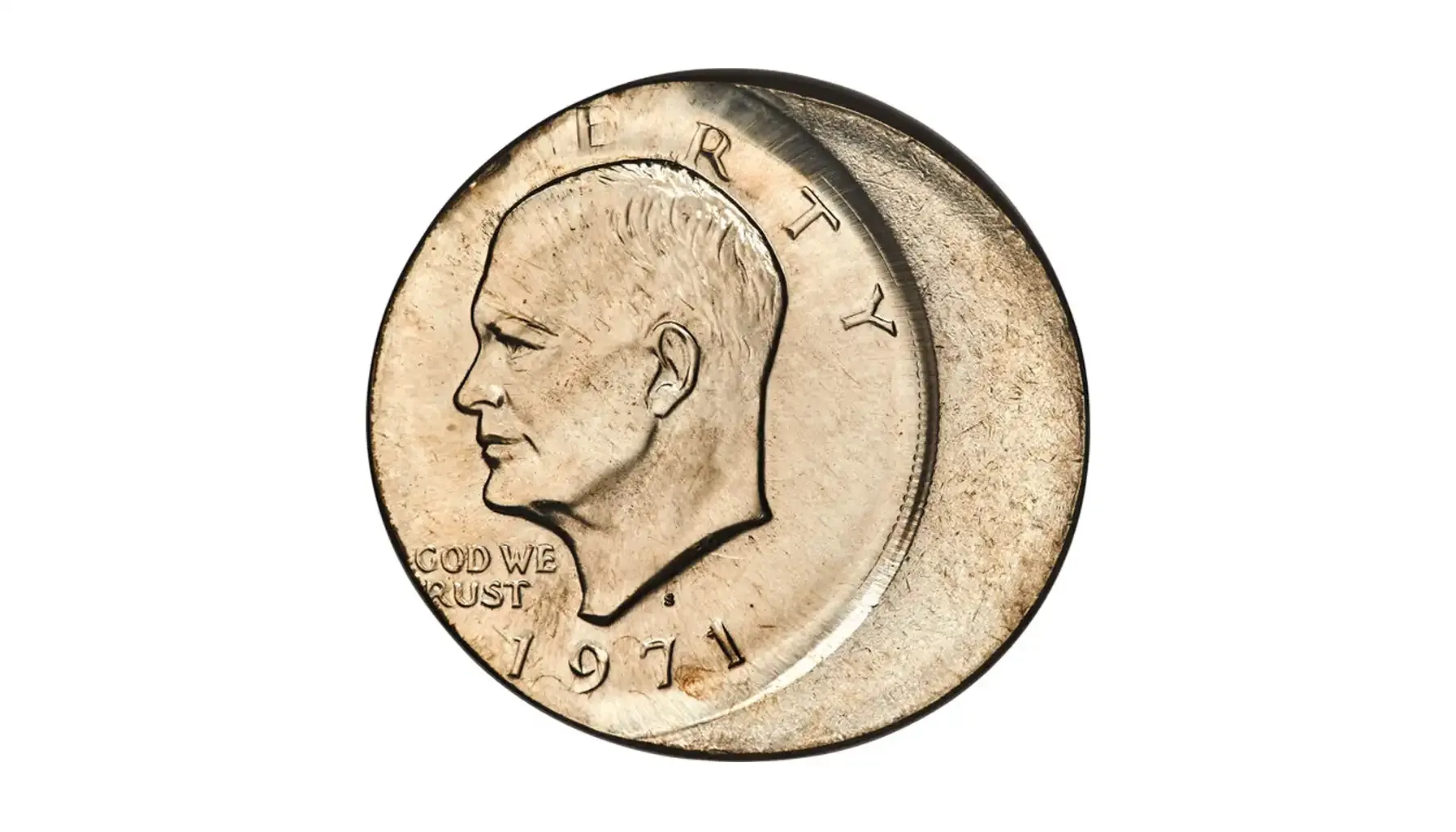
Many hobbyists ask how much is a 1971 Eisenhower silver dollar worth when they find an off-center strike. This error occurs when the planchet does not align properly under the die, causing part of the design to be missing. Off-center strikes can range from slight (1–5 %) to dramatic (over 50 %). The more displaced the design, the higher the potential premium among error collectors.
Measure how far the design is shifted from center; greater displacement usually means higher value.
Check for unstruck planchet area showing raw metal where the image did not reach.
Examine edges for blended die marks or partial lettering that confirms misalignment.
Compare the design’s visible elements to the coin’s rim; the uneven border indicates off-center strike.
1971 Kennedy Half Dollar and Silver Confusion
The 1971 Kennedy half dollar silver content varies by issue. The Mint struck business‐strike halves in copper-nickel clad for general circulation. Collector sets included 40% silver in proof and Special Mint Set formats. This distinction drives the 1971 silver half dollar value, since only the silver issues track bullion prices.
Many ask, is a 1971 half dollar silver when they spot one in pocket change. Only coins from proof sets or Special Mint Sets carry actual silver. To know for sure, learn how to tell if a 1971 half dollar is silver by checking its mint mark and packaging. A true silver piece comes from San Francisco (mint mark “S”) in proof or SMS, weighs slightly less than a clad coin, and rings with a clear tone when gently tapped.
Final Thoughts: Should You Collect the 1971 Eisenhower Dollar?
Investors often examine the 1971 silver dollar value d to gauge how Denver strikes perform compared to other mint marks. The one dollar coin 1971 value reflects both collector interest and fluctuations in silver prices. Many hobbyists seek out high-grade Denver examples because they can offer better long-term appreciation than common Philadelphia issues.
Overall, the 1971 Eisenhower dollar value today remains steady for well-preserved coins and special mint errors. Collectors appreciate the series for its iconic design and limited silver mintage. For more detailed collecting insights and value trends, see 1776 to 1976 Dollar Coin.

